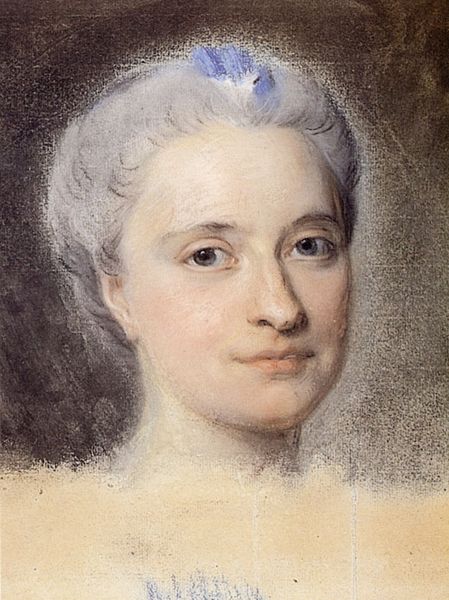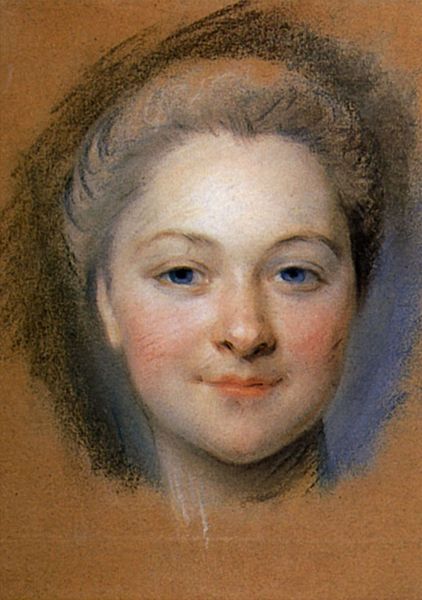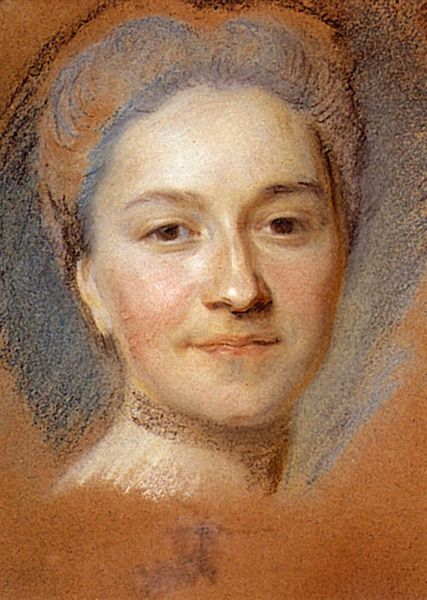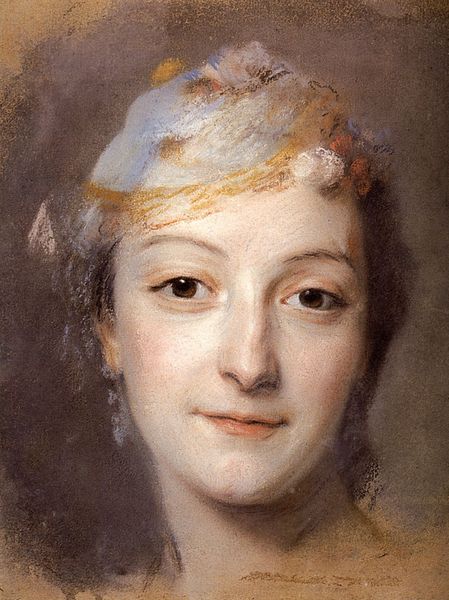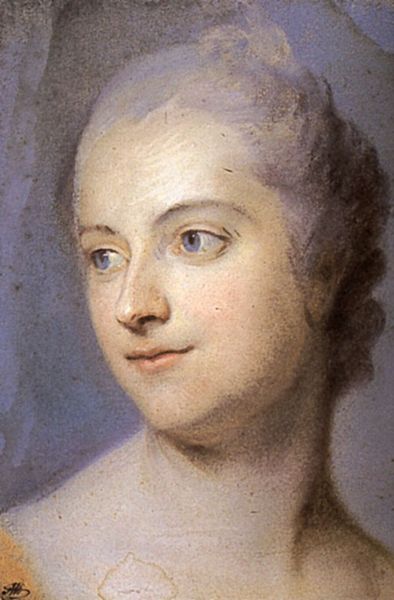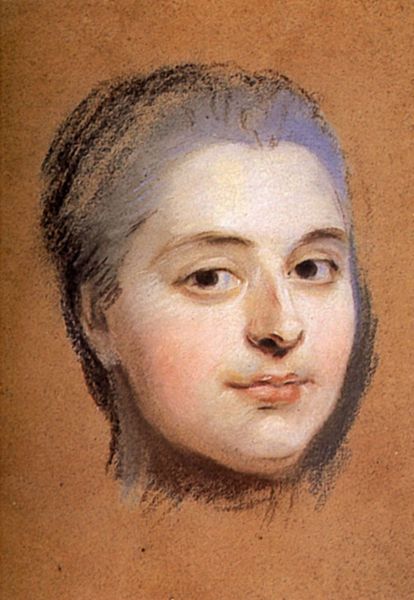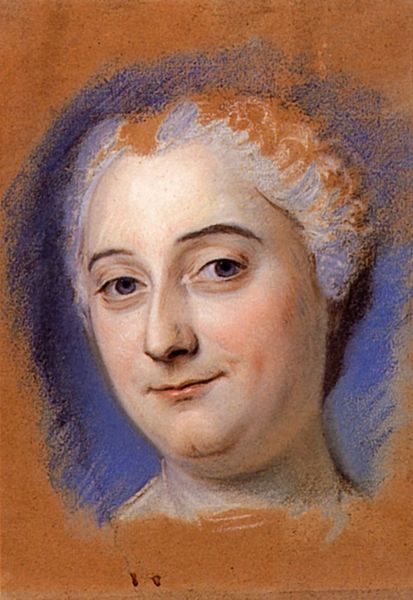
pastel
#
portrait
#
head
#
face
#
portrait reference
#
portrait head and shoulder
#
animal portrait
#
animal drawing portrait
#
nose
#
portrait drawing
#
facial study
#
genre-painting
#
pastel
#
facial portrait
#
forehead
#
portrait art
#
female-portraits
#
fine art portrait
#
rococo
#
digital portrait
Copyright: Public domain
Maurice Quentin de La Tour captured Princess Christina of Saxony in pastel, a medium he favored for its immediacy and soft textures. In 18th-century France, portraiture served as a powerful tool for constructing and reinforcing social hierarchies, and La Tour was a master of the genre. His portraits often flattered his aristocratic sitters, subtly communicating their status, character, and refinement. However, La Tour was also celebrated for capturing something of the sitter's inner life, a quality highly valued by Enlightenment society. Christina's demure gaze and delicate features reflect the ideals of feminine virtue and aristocratic grace. Art historians consult period sources like salon reviews, correspondence, and fashion plates to contextualize portraits like this one. These resources help us understand the social rituals and expectations surrounding portraiture and how artists like La Tour navigated the complex politics of representation. Ultimately, this portrait reminds us that even the most seemingly straightforward image is shaped by the cultural and institutional forces of its time.
Comments
No comments
Be the first to comment and join the conversation on the ultimate creative platform.
